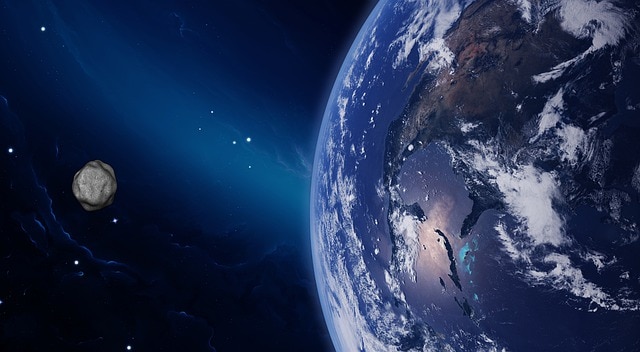
NASA Warns of Possible Asteroid Collision with Earth on Valentine's Day 2046
In recent news, NASA has raised concern over the possibility of a large asteroid, named 2023DW, colliding with Earth on Valentine's Day in 2046. This asteroid is estimated to be around 300 meters in size, which is equivalent to the height of the Eiffel Tower. While the chances of impact are currently low, NASA continues to monitor the asteroid's trajectory and potential risk to Earth.
Asteroid 2023DW and Its Potential Impact
Asteroid 2023DW was first discovered in 2023 by NASA's Pan-STARRS observatory in Hawaii. This asteroid is classified as a Near Earth Object (NEO), which means that its orbit around the sun brings it closer to Earth than other asteroids. According to NASA's Center for Near Earth Object Studies (CNEOS), the asteroid has a 1 in 2,700 chance of impacting Earth on February 14, 2046.
If asteroid 2023DW were to collide with Earth, it would have a devastating impact. The energy released upon impact would be equivalent to the explosion of multiple nuclear bombs, resulting in widespread destruction and loss of life. The asteroid's estimated size makes it one of the largest objects to come this close to Earth in recent history, underscoring the urgency of NASA's efforts to track and monitor its trajectory.
Also Read:
NASA's Efforts to Track and Monitor Asteroids
NASA's CNEOS is responsible for tracking and monitoring NEOs like asteroid 2023DW. The center uses a combination of ground-based telescopes, radar systems, and space probes to study these objects and predict their trajectories. NASA also partners with other space agencies and observatories around the world to gather data on NEOs and share findings.
NASA's goal is to identify and track all NEOs that could pose a risk to Earth. The agency has identified more than 25,000 NEOs to date, with hundreds of new discoveries each year. NASA estimates that there are around 1,000 NEOs larger than 1 kilometer in size that could pose a global threat if they were to collide with Earth.
Other Asteroids Currently on NASA's Radar
Asteroid 2023DW is not the only asteroid currently on NASA's radar. In fact, there are several other asteroids that NASA is closely monitoring due to their proximity to Earth. One such asteroid is 2020 FV4, a 92-foot space rock that is set to pass by Earth on April 7, 2023. While the asteroid is not expected to collide with Earth, it will come very close, passing within 0.06 lunar distances.
Another asteroid that has garnered attention is the 590-foot space rock, 2001 FO32. This asteroid is expected to pass by Earth on March 21, 2022, at a distance of 1.25 million miles. While this asteroid poses no threat to Earth, it is significant because of its size and close proximity to our planet.
Conclusion
While the chances of asteroid 2023DW colliding with Earth on Valentine's Day 2046 are currently low, NASA's continued monitoring of this and other asteroids is essential to ensure the safety of our planet. The agency's efforts to track and study NEOs are vital in understanding the potential risks they pose and taking steps to mitigate those risks. As the world continues to advance in space exploration and technology, it is important to remain vigilant and prepared for any potential threats from space.
Keywords: asteroid, NASA, collision, Earth, Pan-STARRS, CNEOS, NEO, radar, observatories, risk
Thank you for
Read More:
That's it for this article.
Thanks for Visiting Us – fixyanet.com


0 Comments